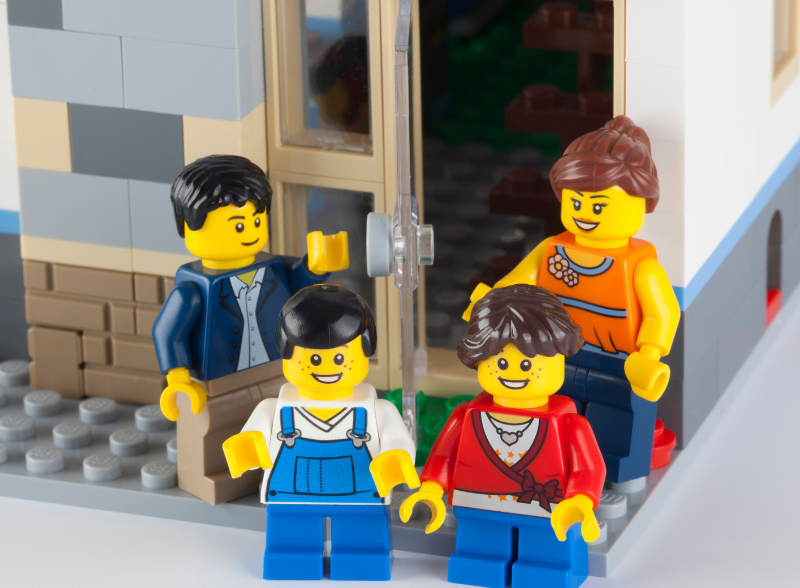Play Has A Place In Company Culture—How LEGO Fosters Creativity At Work
LEGO surpasses ages and generations, because who can resist creating something when you’re given a collection of those colourful bricks?
But how has LEGO been able to keep up with the high tech digital devices children are lured to use in our modern world, and continue to reign supreme as a toy on every child’s wish list?
Despite being a legacy brand, LEGO has built a business and company culture that continues to inspire LEGO builders of all ages around the world.
Is “everything awesome” at LEGO, it certainly seems that way from their company culture.

LEGO History
LEGO was founded in 1932 by Ole Kirk Christiansen, a respected carpenter with his own business.
Ole went out of business during the Great Depression and soon after began to use his leftover wood to make toys. Eventually, he began using plastic to create the well-known LEGO blocks we know today.
The name LEGO comes from the Danish phrase leg godt, meaning “play well”.
After almost suffering bankruptcy in 2004, LEGO made some shifts in company culture and its mission as a retailer. By 2015 LEGO became the biggest toy retailer, with sales amounting to $2.1 billion.
The Christiansen’s built the LEGO brand around the idea that play could be more than toy cars, dolls, and bears. Toys could foster creativity and allow children to use their imagination to create endless opportunities and expand their minds.
But what could a Danish toy production company have to say about company culture?
Quite a bit.

The Ethos at the Heart of LEGO’s Company Culture
If you’re going to build a toy that strives to help children develop creatively, then you also need to build those products in the same environment where endless possibilities can be explored.
LEGO doesn’t just talk about creativity and sell it, it lives creativity every day in its company culture.
Jorgen Vig Knudstorp, LEGO CEO, knew that it was vital to have creative, happy people who could inspire children to build with LEGO. Therefore his core focus at LEGO was to build a company culture with the same values it was building into its products for children.
In a BCG interview on Youtube, Knudstorp speaks on the importance of creativity at any age, and the importance of creativity as the basis for company culture at LEGO.
Innovation Beyond Childhood
The value of creativity does not just stop with a vibrant and creative office space. LEGO encourages its employees to tap into their unlimited creative potential.
You won’t find any culture decks or handbooks at LEGO to correct or guide team behaviours. Instead LEGO has the attitude that it should be a free-thinking environment. A far cry from traditional corporate culture.
Unlike the common, do what you are told mentality, LEGO forms a culture of clarity and strategic choice. Encouraging their people to develop interesting ways to get the job done. They believe a controlling, restrictive environment stifles workers, creates bureaucracy, and promotes fear.
At LEGO, the emphasis is less on how the job gets done and more on what gets done. With a clear mission statement, creative freedom can produce incredible results.
Much like the children playing with LEGOs at home, the people are encouraged to tap into their innovative side to solve problems and complete tasks in a surprising fashion.

In his interview, Knudstorp states, “Every human being has the creative urge and desire to make something.”
LEGO teams are encouraged to tap into their creative potential with the kids and customers in mind. LEGO prides itself on providing outstanding value to children and customers, and their parents. It’s at the forefront of their business.
The strong connection between the LEGO team and their mini creators is harnessed in the tours and visits at their head office, where children get to test out new products before they hit the market.
Knudstorp emphasises giving his people autonomy and room to grow. He strives to create a culture in which, at the end of the year, he gets up on his beer box to celebrate another record result and says, “Thank you for doing all the things I never asked you to do.”
At LEGO control is something that suffocates the unique potential of every employee. Much like the children stretching their imaginations while they play, the LEGO teams emulate a similar mindset.
You can find their mission stated straight from their website, “To inspire and develop the builders of tomorrow.” You can see their mission truly reflected in their company culture. Knudstrop believes there is more than one solution to a problem, and people shouldn’t need to refer to a rulebook, but rather have an intuitive sense of how to do things.

Beyond The Bricks
You can find a clear set of values on the company website. LEGO started as a small family-owned workshop and continues to uphold similar values. They value teamwork, creativity, children, and families.
Workers at LEGO can expect an environment that fosters connection, teamwork, and innovation. Children are often present in the workplace for tours and co-creation events.
LEGO lives its value of family by granting an extended parental leave of 26 weeks to their employees.
There is a strong emphasis on the power of play, even for adults in the workplace. At LEGO, you can expect to see bold banners, sculptures, and unique imagery decorating the spaces of designers in their work zones. LEGO takes play seriously at every age.
Living in LEGOs Culture
The Plays of LEGO Culture

LEGO Office
You wouldn’t expect LEGO to have any old corporate head office. Come on folks!
In 2018 LEGO had its entire head office rebuilt to completely capture LEGO and what it represents.
From the outside there are LEGO brings looking like they are part of the structure of the building, and inside you can see some of the iconic LEGO-style features such as stairs that look like a slide, and big LEGO brings hanging from the ceiling.
LEGO Recruitment & Onboarding
Embedding their culture of play from the first day, LEGO candidates can expect to encounter the power of play even at their very first interview.
Potential candidates may be asked to build something with LEGO during an interview, and during onboarding will take part in a fun building competition with their new colleagues as a way of breaking the ice.
LEGO & the Local Community
At LEGO, if you haven’t realised already, play is part of the job.
To keep teams highly involved in play and creativity, and deeply connected with the needs of the children they’re serving, local school visits are organised, and employees can become qualified facilitators of play sessions in their own local communities.
Culture Lessons We Can Take From LEGO
LEGO illustrates vibrantly that what you believe in, you build in your company culture.
They don’t just talk about creativity and expect the outdated button switching of creativity to happen in corporate boardrooms. LEGO creates an environment where people feel safe to express their creative ideas and do something daring.
LEGO started as a tiny workshop in the 1930s and grew into a multi-million dollar company. With strong foundations and company culture to thank. Built on humility, teamwork, and creativity, the company has built a culture that we can all learn from;
Start with your ‘management’ style
LEGO doesn’t follow a strict hierarchical structure, or traditional management style. Psychological safety is at the heart of bringing out their team’s creativity, and they’ve taken the steps to remove bureaucracy and build a culture based on trust and autonomy.
Play isn’t just for kids
Having a sense of fun within your company culture can help employees feel comfortable and enjoy the work they do. They will look forward to coming into the office, tapping into their imagination and personal experience to develop surprising solutions to the company’s biggest problems.
Embed your beliefs into every action and area of your culture
LEGO puts play and creativity into every element of its culture. From the management style it uses, to the way they’ve designed the offices and onboarding process. Everything connects back to that bigger purpose of stimulating creativity. Can you say that about your company culture?
Encouraging creativity and innovation delivers profound results
Instead of encouraging everyone to follow a rigid set of guidelines, reward creativity and innovation as long as the job gets done. When you tell everyone exactly what to do and how to do it, you miss out on their individuality as an asset to your team. Expecting your people to show up creatively allows them to share their potential with the company, rather than keeping it boxed away while they mindlessly follow a clear set of instructions.







